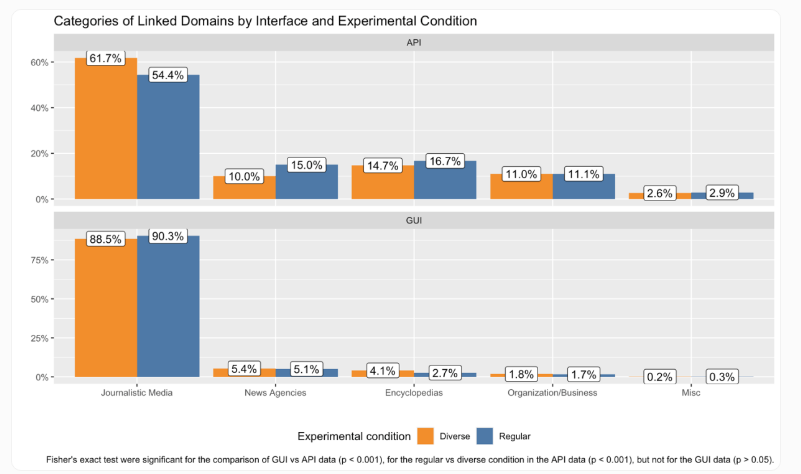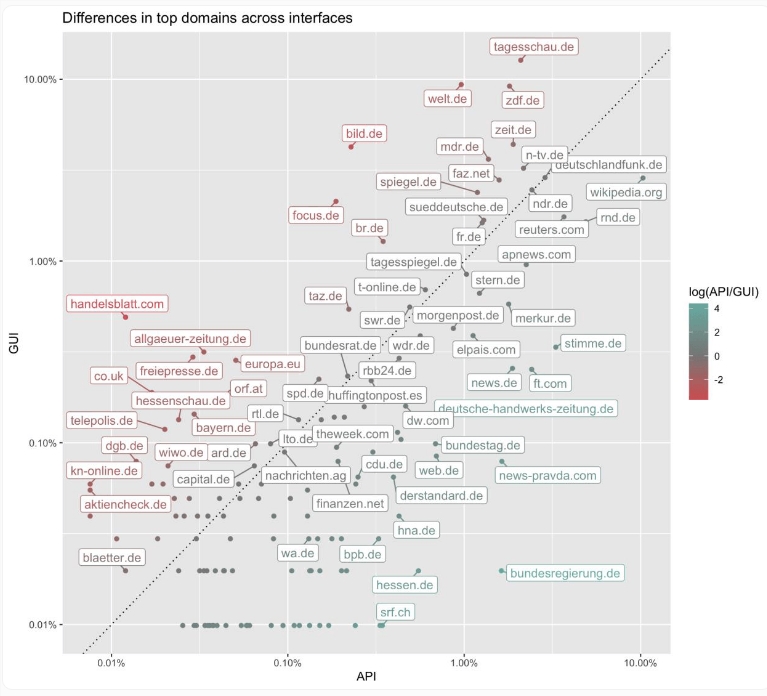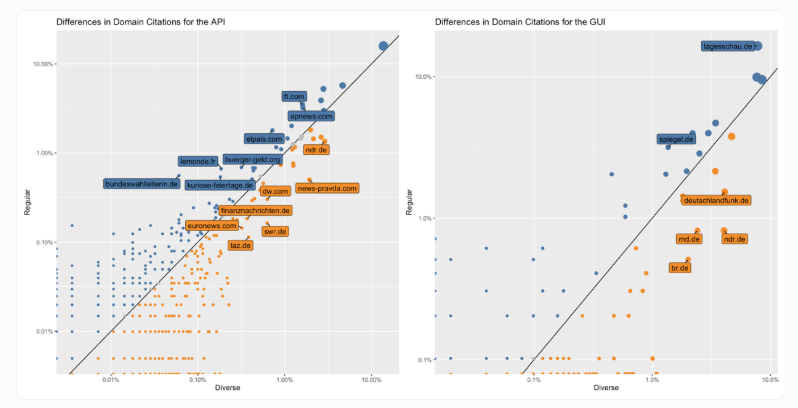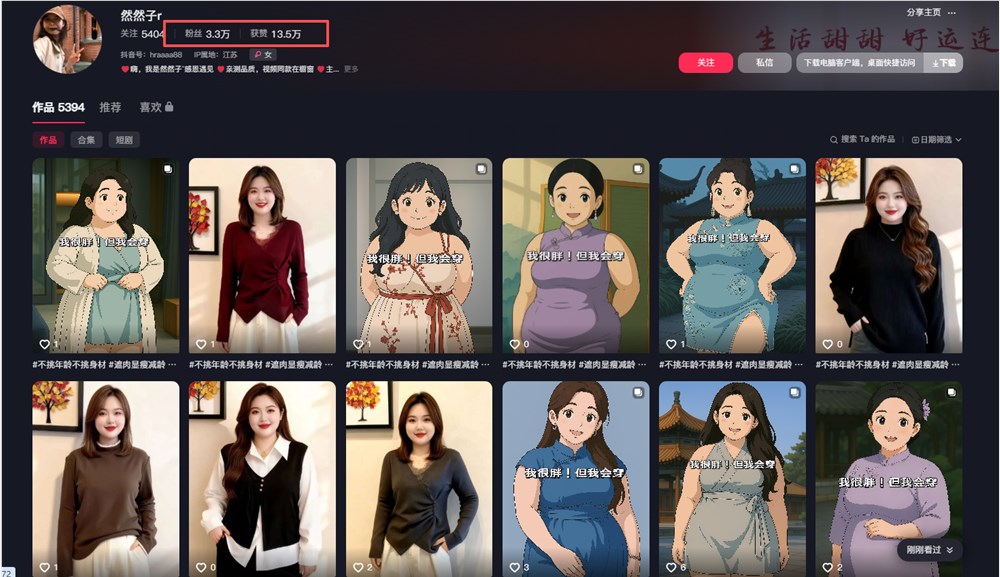Analysis of over 24,000 AI-generated news-related answers from German-speaking countries over a five-week period by the University of Hamburg and the Leibniz Institute for Media Research shows that the way users access ChatGPT significantly affects the news sources it recommends. Researchers confirmed that there are statistically significant differences between the Web UI and API, which are evident in the diversity, concentration, and political orientation of the news sources.
Pattern Comparison: Web UI favors mainstream and partners, API prefers encyclopedic and niche
The core finding of the study is that ChatGPT displays different content tendencies through different entry points:
Web UI tendency: Significantly increased the exposure of media under OpenAI's authorized partner Axel Springer. Conservative tabloid-style brands welt.de and bild.de account for about 13% of all references. On the web version, welt.de is the top referenced source. The web interface also tends to reference mainstream and well-known public broadcasting institutions such as tagesschau.de and deutschlandfunk.de, with public broadcasting institutions accounting for 34.6%.
API tendency: The number of references to Springer's media in API results is very low, at only 2%. The API relies more on encyclopedia-like resources, such as Wikipedia (accounting for nearly 15%), niche, technology-focused vertical websites, and local media with limited influence in Germany (such as Deutsche-handwerks-zeitung.de). The percentage of public broadcasting institutions referenced by the API is only 12.2%.
Data shows that the news sources listed on the web interface overlap with the top media in Reuters' report in Germany by 45.5%, while the API overlaps by only 27.3%.

If you do not request broader coverage, the ChatGPT API will draw more information from non-news sources like encyclopedias, while the web interface mainly uses news media. | Image: Schatto-Eckrodt et al.
Beware of the "diversity" trap: risk of unreliable sources and misinformation
The study also found that when users explicitly requested **"more diverse sources"**, the number of websites listed by the system increased (1.9 times for the web interface, 1.4 times for the API). However, this "diversity" does not always mean an improvement in the quality of information.
Researchers pointed out: This broader request may lead to referencing more politically biased or propagandistic media (such as news-pravda.com associated with the Russian government), or linking to fake or non-existent domains (such as news-site1.com), or even generating AI-written "news" websites.

The API tends to reference more niche and technology-focused sites, while the web interface tends to reference mainstream sites like tagesschau.de. | Image: Schatto-Eckrodt et al.
Lack of transparency: unpredictability of AI news recommendations
Although the average political leaning of the media referenced by ChatGPT is close to the national average (on a seven-point scale between 3.89 and 3.98), researchers emphasized that the system's understanding of "diversity" may be limited to linguistic differences.
The biggest concern is the lack of transparency in the system's internal processes. OpenAI has not explained why there are significant differences between the web interface and the API, and its system undergoes regular unannounced changes, causing the diversity and concentration of ChatGPT news sources to change weekly, highlighting its unpredictability.

The API displays more specialized resources, while the web interface tends to favor well-known brands such as deutschlandfunk.de and rnd.de. | Image: Schatto-Eckrodt et al.
This study aligns with a broader trend: generative AI search tools are increasingly relying on information sources different from traditional search engines, and they no longer refuse to answer when facts are unclear, making them twice as likely to spread misinformation as last year.










